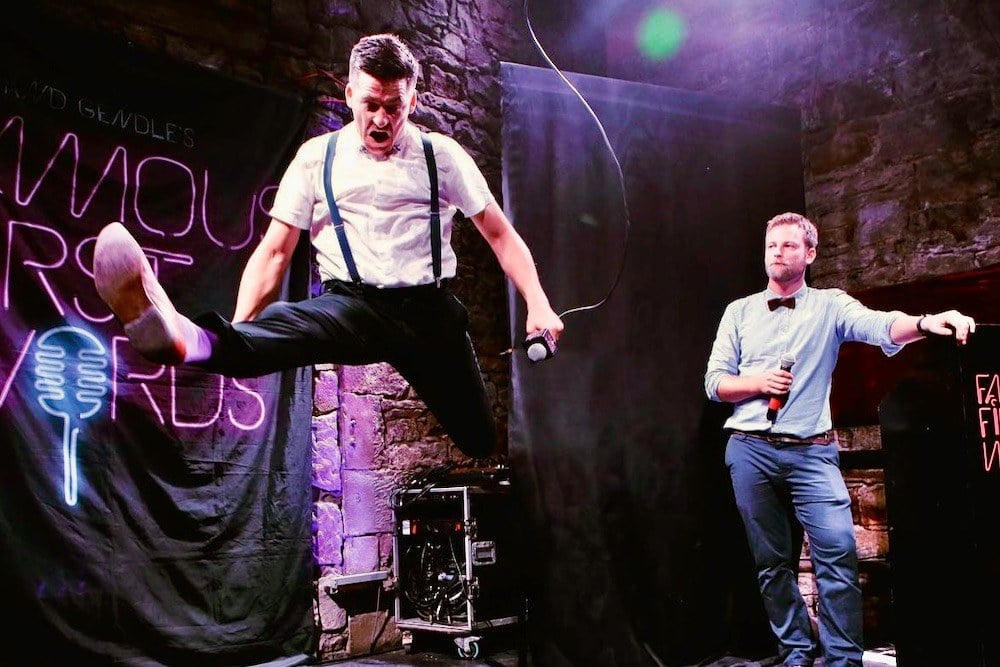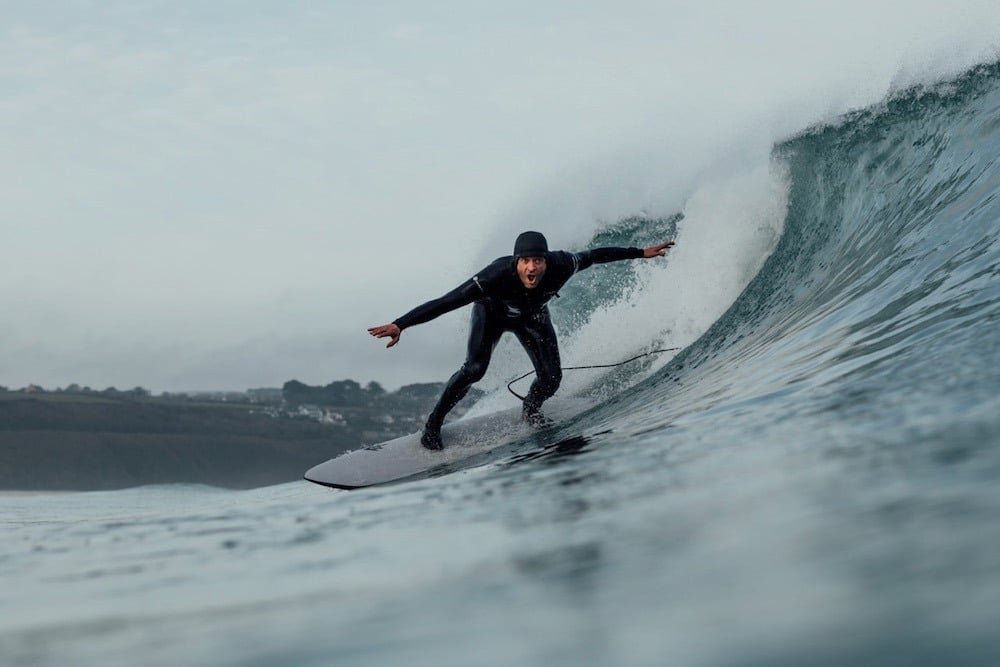FUEL TV: Don Meek


Episode 26: Podcast with Don Meek, Chief Content Officer and GM North America of FUEL TV
In the next episode Oli Russell-Cowan chats to media, marketing and entertainment executive Don Meek the head of Content and GM North America at FUEL TV.
California native Don started his career at Prime Ticket Network managing a number of sports events including the US Open of Surfing. He then went on to Sony Pictures where he launched international television networks and headed up sales and marketing for one of the pioneering online video platforms at iFilm.
Don then became the President of Primedia’s Action Sports Group looking after websites, events and magazines including SURFER and SKATEBOARDER and was then head of digital at Tribune Company.
Don is currently steering the ship at FUEL TV in the US and is in charge of content going out to 95 countries around the world. He is also an avid surfer, chair of the content committee and board member at the Surfing Heritage and Culture Center.
Tune in for some of his best stories over the years in the action sports industry and what projects FUEL TV has in store and how he sees the landscape of action sports media changing.
Listen to the podcast:
Dive in and listen to this episode on Apple Podcast and Spotify.
Read the transcript:

Rad Season: Hi, guys, it’s Oli from Rad Season. I’m stoked to be joined today by the General Manager of North America and Global Chief Content Officer for FUEL TV, Don Meek.
Thanks for coming on the show.
Don Meek, FUEL TV: Thanks, Oli. Good to be here.
Oli: Whereabouts are you at the moment?
Don: Laguna Beach, California. That’s where our US headquarters are here.
Oli: What’s the situation been like over there?
Don: From a COVID standpoint. Well, we are clearly struggling as a country. There have been a lot of challenges.
We’re very fortunate here on the west coast and certainly in Southern California, where we’re outside most of the time. I don’t think we’re staring down the gun barrel the way some of the folks in the colder parts of the country are.
It’s super challenging. A lot of us are in that same situation that many around the world find themselves in, it’s uncharted territory.
Increase in action sports participation
The good news is you can still go surfing, you can ride a mountain bike, you can go skateboarding. It’s pretty incredible what we’re seeing in terms of that. So in our world, the participation levels are way up. There’s a lot of vibrancy in this.
Oli: There’s been a massive uptake as well with people getting back into sports, picking up their mountain bike again, or surfboard, you name it, trail running. People are kind of staying local, but doing more outdoor things.
‘We’re all locals again.’
Don: So there’s a lot more happening in that regard. Some interesting data just came out, at least in the US around surfing and skateboarding participation. I’m sure we’re going to see the same thing in the winter sports where there are just more people doing it because it’s a safe socially distance thing to be able to do.
Oli: I’d love to take it back to where you got into action sports. What started it all off?
Action Sports Media

Don: Well, it was really interesting. So I’ve been a surfer my whole life. That’s really what I wanted to do when I was a kid.
I was lucky enough to grow up in Southern California, in the South Bay. I did all the things that you would do traveled and did all of that.
Then when it came time to get a job, I learned about the media business, and I got into a position of selling television advertising.
In 1990, I went to work for a company here called Prime Ticket Network. We had a lot of pro sports teams on local cable, but we didn’t have any baseball in the summertime. So we had to figure out what we would do in the summertime. At the time we were carrying what was called the Bud Pro Tour and the ABP Pro Beach Volleyball Tour.
In 1991 we had a terrible advertising recession and we lost our budgets for producing those events. The guy that was running programming at the time, a dear friend of mine named Don Corsini, he and I had gone on a bunch of surf trips together. He said, Why don’t you come and work for me, and if you can go find underwriters to help cover the cost of producing these events we can keep them on television.
It was right then that he introduced me to the guys at surfing magazine, Peter Townsend and Bob Mcnown, Dave Gilovich and Flame and we put together the beach network where we were selling ads in the magazines, signs on the beach, sponsorship on the beach, and then television ads in the telecasts themselves. It just opened up a whole new world for me, which led to our team acquiring the Bud Tour for television.

Don Meek and Peter Townsend
Action Sports Events
I created and ran for three years, the US Open of Surfing, and the American Pro Snowboard Series and a mountain bike tour called Downhill Mania. That was the beginning of it all for me in the early 90’s of getting exposed to action sports as my profession but also is something that I loved.
Oli: Were you then looking at the events and thinking okay, how can we combine it with media?
Don: Yeah, so we got the guy who owed the Bud Tour at the time well Body Glove owned it and Robbie Maestro, the son of one of the two founders was running it. He and I became good friends and we sat down and we talked about the value of having an event on television versus not on television. He said, well, you can’t compare the two, there’s just the value of the sponsorship going up, you know exponentially when you’ve got it on TV.
This then led us to think owning the events might be a better route forward. Not only did it give us programming, we could also get sponsors to help cover the cost, and we as a television brand got great marketing out of it. We could make money at it at the same time.
At the same time, ESPN had launched the X Games, so we were right there in that same timeframe with them. So they had the X Games and we had our event group portfolio. That’s what started the whole thing.
Oli: Were you just focused on the action sports event side of things in the early 90’s?
Don: In my group, we started with action sports. Pro beach volleyball really wasn’t an action sport but it was a Southern California beach lifestyle thing.
We branched out, we had a rugby event or two that we brought over from the UK. We put the national inline skate series on television at the time as it kind of fit. We tried a bunch of stuff.
In the end, that was really the foundational part for what ultimately, CJ and those guys did at Blue Torch and then ultimately launching it into FUEL. So the Genesis was there in the early 90’s.
Oli: So after those early years did you then go on to Sony from there?
Don: Yes. I left Fox in 97. I went to work for Sony Pictures and their international television group.
I had an opportunity to be part of a team that launched a portfolio of channels that Sony still owns around the world, including AXN and Animax and Sony Entertainment Television. That was my first real foray into the international marketplace.
Oli: Was that out in California as well?
Don: Based in Southern California in Culver City at Sony Pictures headquarters, but that was the kind of job that kept you on the road, 40 weeks a year, you know, going into the local market and being on the ground for three, four weeks. Identifying, recruiting, hiring and training local staff to run the channels. Yep.
Oli: What made you go into that, what was the transition?
Don: A good friend of mine was running international networks for Sony. He had a project that they’d invested in, in the sports space. Because I had a sports background and it was an event-based property that they’d invested in London he wanted to get some insight into how to optimize that.
It was a consulting gig that turned into a job. It was one of those project-based things that turned into a meaningful opportunity.
Going Digital

Oli: What was the journey from there?
Oh, it’s easy. In 1995 I had a chance to build the first website for the US Open of Surfing. I’d read a book called, ‘Being Digital’ by Nicholas Negroponte in 1994. I bought 10 copies of it and gave it to my 10 closest friends and said, ‘you guys got to read this, the world’s gonna change’.
So I partnered with Sun Microsystems and a webshop out of San Diego called cyber works. And we built a website for the US Open of Surfing.
We did things that we never knew we could do. No one told us we couldn’t do it so we did it. It was Surfline’s very first camera part of that in 95. There were a lot of things that we had an opportunity to do.
I decided to take a proper run through the internet space. In 2000-2001, I worked for iPhone, which was YouTube before YouTube, quite frankly and economics of distributing video on the internet were pretty crazy. We had a hit movie that pretty much put us out of business because so many people were watching it, and it just became that prohibitively expensive to distribute the content.
There really wasn’t video advertising on the internet at that point. Some brave brands had started doing it, but it was not generally acceptable. People were just really wrapping their heads around digital display.
Action Sports Group
I went to the Gravity Games in 2003, and I ran that event as the President which was owned in part by a company called Prime Media that owned the action sports group of magazines. So, I ran the Gravity Games and sold it.
Then I went to work as president of the action sports group that included Surfer, Surfing, Snowboarder, Skateboarder and the adventure titles were Powder, Bike, Canoeing, Kayaking, Climbing and we owned half a dozen events and websites. We launched something called Wave Watch to compete with Surfline. So yeah, that was the action sports group. That went from 2003 to 2006.
Then I went to Tribune company, which was the big media company that owned newspapers and television stations and I had four jobs there in three years, ultimately ended up as the Chief Digital Officer.
In 2011 it just became clear that the wheels were coming off, and I had the opportunity to exit the company which I did. Then I started working on FUEL TV at the end of 2015.
FUEL TV
Oli: How has FUEL TV changed since the early days in 2003 when it began?
I would say that FUEL hasn’t changed as much as the market has changed.
FUEL’s original vision of being the global home of action sports. I’ll go back to the founding team of CJ Olivares, and Scott Paragon, Rich Battista and the guys at Fox were the ones doing the heavy lifting. The vision was, there are all these sports that people are participating in surfing, skateboarding, snowboarding, mountain biking, BMX, wakeboarding and at the time freestyle motocross was a pretty big deal.
There was no legitimate home for those on television. There was a large enough audience that was moving culture to believe that you could put it all together and package it effectively so that you became an authentic brand within the space.
To curate and present content that was authentic and resonated with the core participant base. Really thinking about enthusiasts sports differently than we think about spectator sports. So football in whatever form you want to call it, or basketball, or baseball, or gridiron, or whatever it might be are spectator sports and attract a wide variety of people and a very small percentage are within the active participant base like a tiny percentage.
Whereas the enthusiast sports are what we described 30 years ago are vertical sports with the majority of viewership or readership to the active participant base. This would include all the mentioned sports and if you put them together the right way, then there’s an opportunity to become the channel for global driven sports.
FUEL TV Rebranding
So that’s what FUEL did. They did a great job and broke so much new ground.
In 2011 there was a deal that Fox did back in 2011 with UFC. They didn’t have a lot of places to put additional programming that they needed to distribute. So they started using FUEL for that. I think that there was a waning belief that action sports could scale beyond the audience that it had already developed.
There were also some other things that were happening at Fox in terms of wanting to build a national sports strategy to compete with ESPN. So FUEL ended up changing its programming mix, it changed its brand and had a bunch of different kinds of programs on it other than core action sports.
Then in 2013, they rebranded FUEL TV to Fox Sports 2. They took what was their auto racing channel, Speed Channel, and they rebranded that to Fox Sports 1. So FUEL essentially went off the air and went dark in the US in 2013. What’s interesting about that is it never went off the air outside the US.

Oli: It was still running in Europe at that time.
Don: That’s exactly right.
This is the great secret. If you haven’t been outside the US in a while to see FUEL on the air you never would have known that it had continued. So it went off the air, kind of gone and forgotten.
But there was a team of people that kept running, kept it on the air based out of Lisbon, where you are just up the hill from you.
That kept going. In 2014, CJ Olivares and Fernando Figueiredo, who’s my partner and our CEO, they actually engineered a purchase of the FUEL channel from Fox. They kept it on the air outside the United States and then had big plans and ambitions to bring the channel back here.
There were a number of headwinds to that. There were financial headwinds and certainly marketplace headwinds where the cable business have started to really fragment or actually be challenged by the cord-cutters where internet television was starting to become a real thing.
You had Netflix and you had a couple of other services that were giving traditional cable subscribers the opportunity to cut the cord. There was really not yet what we call the OTT marketplace today, where channels can actually now be distributed without having to go through a cable operator or a broadcaster.

That’s what changed everything for FUEL. We are back in the US and back in Canada, and just launched in Brazil. We have a lot of new life into the channel.
Oli: When you came on board four years ago what were you working on? Were you looking at what kind of content deals you would be doing?
Don: I had joined forces with a guy by the name of Andy Schoen, who’s one of the great American media executives, and he had been the early days of MTV. His most recent thing was he had launched Revolt TV with Sean Combs.
We joined forces at the end of 2015, to create a new company called Everyday Networks, with the theory being that a network services business with creative, technology, marketing, data and sales could be established to help set up what we began calling OTT channels. But ultimately, they were all screen channels where if you think about getting content to screens.
Is there a way that we could start this next generation of channels where you had MTV back in the day, but now you have this whole new way of getting to the audience.
We were leaning into this idea of creating a unified technology platform and network services business to build and distribute new enthusiast channels. One of our partners suggested that we had a great theory and a great idea. But perhaps we should actually operate a business or two in the space to prove the theory and show that we could raise the money ultimately, that we needed to raise to get it done.
So CJ and I reconnected, we sat down and we talked and we actually acquired FUEL in July of 2016. We set about to integrate it into our organization. By the end of 2016, we had failed to raise the working capital that we needed to continue the venture and we ended up selling FUEL back to Fernando in Lisbon.
I stayed on the board through the course of 2017. Then I took an operating role in 2018, as Chief Content Officer to figure out our programming and content strategy and also find a way to bring FUEL back to the US.
FUEL TV+
That has been my 24/7 thing that I’ve been doing for the last two and a half years is figuring that out. Through a fortuitous set of developments, we were able to get it done. So not only do we have FUEL on Samsung TV plus, we’ve also got a bunch of conversations going on about getting it on to other platforms.
We also partnered with an amazing group out of San Diego called Opper Sports to launch FUEL TV+, which is our subscription video-on-demand app, currently available only in the US and Canada. But it’s our entire FUEL library going all the way back to the beginning plus our 24/7 channel all commercial-free. So that’s Fuel TV+.
Media Landscape Future
Oli: The media landscape is moving so quickly in the last couple of years. What challenges have you seen?
Don: I don’t think challenges, I think nothing but opportunity for a channel like ours.
I think it’s happening on multiple fronts, but it’s all leading in a single direction, which is how content is going to be distributed and consumed over the next, however long it’s going to be. The old monolithic cable bundle is imploding right in front of our eyes.
When you look at the traditional means of distribution, where you had a studio or a network, acquiring or creating content. Then distributing that first over the air and broadcast. Then cable comes into existence.
Now not only is cable used to distribute a broadcast signal to a distant market, but you’ve also now got the ability to create cable only channels or satellite only channels, like a direct TV or a Sky in the UK or Foxtel down in Australia.

You had these geographic monopolies where these cable operators owned a territory, and the only way you could get your television was to subscribe to a bundle from them. That was the status quo up until five years ago, six years ago. Then all of a sudden:
i) Bandwidth becomes more affordable, faster and more readily available.
ii) Entrepreneurs are creating new technologies to be able to do things around video compression, where you can actually get something there much more efficiently.
iii) Device manufacturers have figured out that there’s a bunch of channels out there that will never get launched on cable, but you could put them in an app and you could get them out to every screen in the world.
So all of these things are happening at the same time.
Then the device manufacturers figure it out, so the Samsung’s and the LG’s realized that there might be an Apple TV that you could connect to your television set to be able to get apps or an Amazon Fire TV or a Roku Box. That technology, there was nothing terribly complicated about it.
Samsung and all these guys start to build those capabilities directly into the sets themselves. With App Stores native to Samsung, or an app stores native to Vizio. They realized that there’s a whole bunch of content providers out there like us that are never going to get back on cable because It’s an extraordinarily expensive thing to do to get your channel onto a cable system. They’re never going to pay a subscription fee again, that’s just not going to happen.
To sell your advertising is really difficult when you’re a small channel like FUEL to build and maintain a direct sales team that’s going to be able to monetize that inventory that you might get at any meaningful scale is virtually impossible to do. It’s just not going to happen.
So now all of a sudden, what was happening in digital display advertising with the growth of the supply-side platforms and the demand-side platforms. Digital display starts to migrate its way into television. Into what we would think of as broadcast TV or cable TV but now it’s digital television.
Now you can connect the machines and you can actually create the signal to be built from us to be able to be delivered to what we consider destinations or endpoints, call it a Samsung TV plus, or a Racquet 10, or whatever it might be. We can now deliver the same signal with ad spots available in it. Now through programmatic advertising, you can monetize your inventory, which two years ago wasn’t possible and today it is.
It means we can watch TV in the United States. So FUEL on Samsung TV Plus in the United States is on channel 1179 on TV Plus, and you can turn it on right now.
You’ll sit down and watch a linear viewing experience with ads in the breaks the ads are supposed to be in. It’s completely free to you, you don’t pay for it. You don’t have to pay for TV Plus, it’s a completely free experience.
I think this for us was the real game-changer while we have an app and you can subscribe to it and you’ll get a different viewing experience. Still, the idea of sitting down and watching the global home of action sports on your Samsung TV anytime you want for free is a really compelling value proposition. So that’s how the market changed.
For me personally, as somebody that sold a bunch of ads back in the day to be able to sit down and watch our channel and see an ad run and realize I actually didn’t do anything to make that ad run. There are other people doing it and the machines are doing it. It’s a pretty crazy experience.
Oli: What are you guys working on now? Are there any major projects coming up for next year?
Don: So we were able to do a deal with the WSL (World Surf League), for their rights outside the United States. So it’s about 400 hours of live television that we will have from them.
We’re talking to a number of other Olympic Qualifying guys to determine what we might be able to get on the air as well. We have been producing content consistently out of Lisbon over the last five years. So we’ve got some new programming that people have never seen before in the territory that we’re launching in.
We’ve got some franchises that were incredibly popular back in the day that we are resurrecting. One of them is Built to Shred. We’re very excited about that one.
Another one is Drive-Thru. We’re looking at doing the next generation of Drive-Thru. We’re looking at China right now as a potential territory to be able to go do some surf exploration.
We’ve got some conversations going on in the skate world in various places. I had a fantastic conversation with the guys from the Jackalope Festival up in Canada on Saturday about potentially working with them really excited about that.
We want to follow up on the initiative that we undertook in April called ‘United Action Sports’ where when the pandemic hit, it became pretty clear that a lot of our core brands were going to suffer like everyone was in and the one thing we could do is we could mobilize some of our global advertising inventory because there’s not a global market for ads. Really, at the end of the day, there’s local and regional markets for ads.
We have inventory available to be utilized. So we donated about half of our inventory to qualified action sports brands. And the proposition was simple, send us your spot, and we’ll run it. We ended up over a 90 day period mobilizing about 11 and a half million dollars worth of advertising value, we transacted with about 100 brands and ran about 70,000 spots.
It opened up conversations with really progressive brands about how their content can also be part of the FUEL TV lineup, which makes sense because they’re making beautiful content with amazing athletes. YouTube is one place to put it, but it’s not the greatest user experience in the world. If we can be the curatorial platform and really lend authenticity to the environment in which something is being viewed, we think there’s a significant amount of value in that. So working with brands has been another big part of it.
Oli: Obviously with the Olympics that was going to be coming up this year going into next year. Has this had a massive effect on action sports that were going to be included in it?
Don: It’s clearly had an impact on events. Part of our programming has always been event coverage to some degree. It’s had a massive impact on events. None of us know what’s going to happen.
Will there be an Olympics? I don’t know. It’s still too soon to tell. I think that competition in these sports represents a very small segment of what’s important.
I think that you could make the argument and I certainly have over the years have been put a lot of surfing on television. It’s inarguable that the best surfers in the world are on the pro tour.
There are some great surfers that are not on the pro tour. But that’s where progression is happening. It’s where you see the highest level of performance, I would say the same thing is probably true with Street League.
I would say the same thing is probably true in the Olympic snowboarding movement. But competition only represents like I said, a very small sliver of people’s interest and attention.
I think that there’s a lot more out there in terms of interesting people going to interesting places and doing interesting things in this world. I think that makes up a much bigger opportunity for a brand like ours, where we can tell all of the stories and we’re not just constrained to telling stories about competitions and who’s number one or number two.
The other thing I’ll say is that you just can’t refute the data.
While five of our core sports, since we started, are now in the Olympics, the only one that was there before it was snowboarding. Now you’ve got BMX, skate and surf. You’ve now had a legitimization of the sports as you can talk about the Olympic movement, exploiting skateboarding to go younger. I think there’s some argument to be made for that and does that really reflect the true spirit and nature of skateboarding?
Again, there are two sides to that conversation. Sometimes it’s not telling the story about the Olympic number one, sometimes it’s telling the story about the kid who’s making a difference in their neighborhood.
I think this is where FUEL really shines. We can tell the stories in a very authentic way. In a lot of ways, we’re hoping to be able to turn the channel over to the people who are actually making it happen.
We’re not constrained by a lot of the old structures of broadcast television. We can be a lot more creative. We also don’t have corporate lords and masters that we have to report to. We’re so lucky to be able to do anything we want and try things out with a lot less energy interference than maybe before.
Oli: What’s the best way for people to follow FUEL or subscribe?
Don: Well, if you have a Samsung television from 2017 or later you can find us on TV Plus if you live in the US or Canada, or in soon to be Australia, Brazil, Mexico and India.
If you live in the US or Canada, you can subscribe to FUEL TV Plus at plus.fuel.tv is the way you get there. You can follow us on Instagram at YouTube. So we’ve got a presence that’s growing on social. So that’s the way that you can follow us.
Oli: If people want to get in contact with you Don?
Don: It’s easy. don@fuel.tv.
I’d be happy to and would love to talk to any of the storytellers that are out there. Any people that are creating content, thinking about content, wanting to get more information about what’s possible to be done. We’re really excited.
We want to find this next generation of storytellers. That’s one of the things that we think is really important. There’s a whole new group of kids who are getting off their phones getting outside and they’re doing things and they’re skating, they’re surfing, they’re riding their BMX, they’re playing baseball, they’re having fun and they’re doing a bunch of different things.
We want to meet those guys and girls. That’s really, what we’re about is really figuring out who the next ones are.
Oli: Then telling their story and all the different lifestyles that come with it, right.
Don: And letting them tell their story.
We’re talking about developing a show right now about this group of kids down in North County, San Diego, and they’ll check the waves and if the waves are good, they’ll go surfing. If they’re not, they’ll go fishing. And if they’re not going fishing, they’re going to ride their skateboards, and then they’re making their own fishing poles and they’re going diving.
It’s an amazing group of kids who are living this lifestyle. That’s really incredibly attractive, but it’s super authentic to who they are. They also play video games, but that’s not all they do.
There’s this new ethos that’s bubbling up, and we’re really excited to tell those stories.
Oli: That’s cool. It’s been really good speaking to you and finding out more about FUEL TV. Look forward to seeing what happens with all these future projects.
Don: thanks a lot. I really appreciate it and make sure that in Lisbon we’re fully distributed and you can watch us and you’ll improve your Portuguese.
Oli: Cheers. Thanks.
Watch the video:
Missed the last episodes? Check them out!
Episode 23: Action Sports Personality – Chris Cote
Episode 24: Extreme and Adventure Sports – Alistair Gosling
Episode 25: Dew Tour: Courtney Gresik
Last updated on Oct 21, 2020Have you subscribed to our Newsletter or Podcast? Listen to us on Apple Podcast and Spotify and follow us on Facebook, Instagram Twitter and YouTube.
Accommodation near Laguna Beach, California
Rad Season is providing you with rentals and hotels at the lowest prices available online. Book your stay near Laguna Beach, California using the map below!











